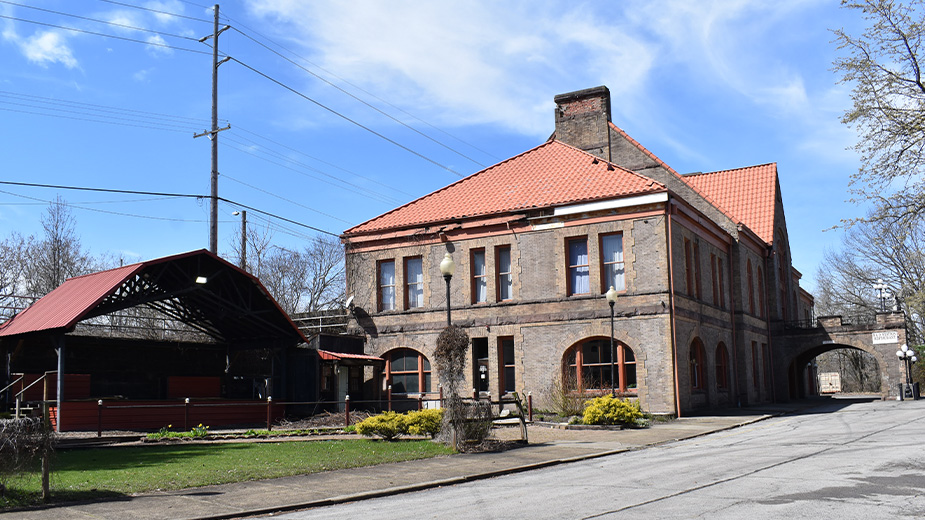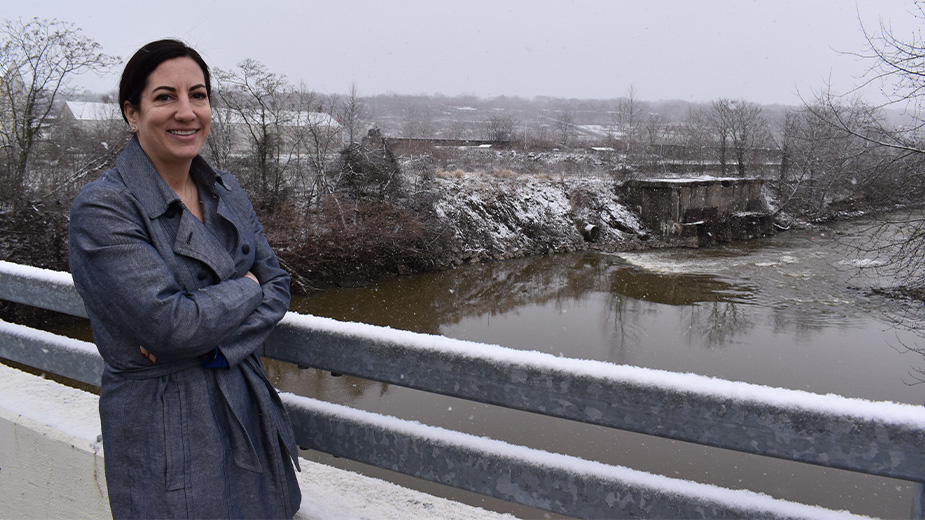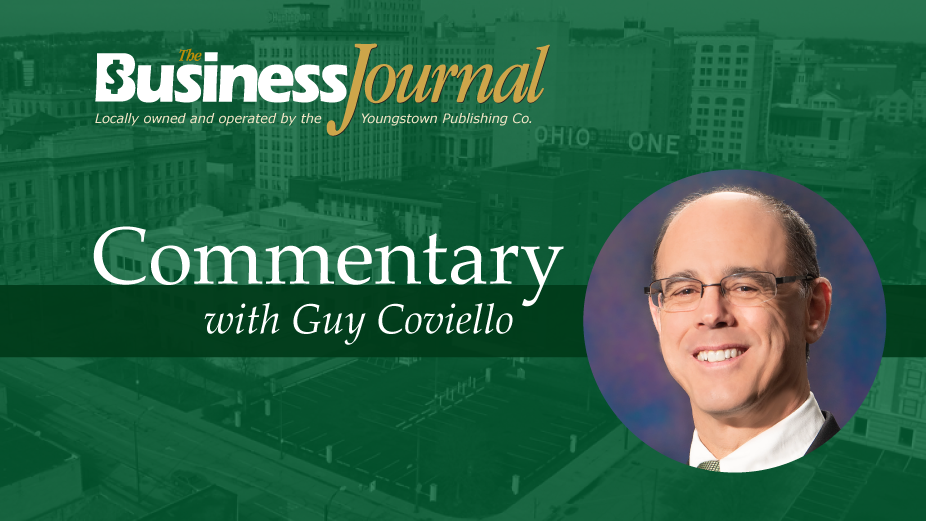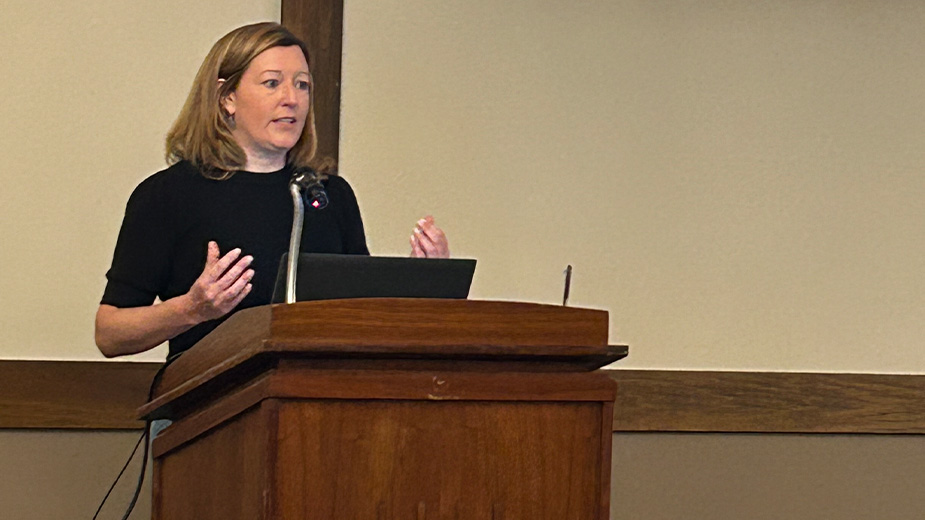Mahoning Riverfront Communities Go with the Flow
STRUTHERS, Ohio – Shortly after taking office four years ago, Struthers Mayor Catherine Cercone Miller was approached by two kayakers.
Cercone drove with them to a spot on the Mahoning River where “everybody was just putting their kayaks in and kind of just jumping in the river,” she says.
The kayakers urged the mayor to install a launch point at the site.
The city, in conjunction with MS Consultants, submitted a grant request to the Ohio Department of Natural Resources and ultimately was awarded $75,000 for the launch, which opened in 2022.
Miller says the launch is just one example of how communities along the Mahoning River are capitalizing on the waterway as a resource for recreational activity and a tool for economic development and population growth and retention.
These efforts accompany ongoing work to remove nine low-head dams, from Lowellville to Leavittsburg, to accelerate the river’s recovery from the industrial waste that was dumped into it for decades.
EPA Focal Point
The Mahoning River has been a focal point of the Ohio Environmental Protection Agency for several years in its efforts to clean rivers in the state, according to Jim Kinnick, executive director of Eastgate Regional Council of Governments. Eastgate has taken a lead role in dam removal and river corridor redevelopment efforts, by helping to secure demolition, remediation and planning funds.
This summer, Warren’s Summit Street dam will be removed, and the materials are expected to be dredged by the end of fall, Kinnick reports. Three dams in Youngstown also should be taken out in spring 2025.
“The river has been cleaning at a very slow pace, because nothing has been dumped in it for the last 50 years. But [removal of the dams] certainly will accelerate the efforts to get the water to a free-flowing state and make it an opportunity for recreation,” he says.
River-related projects account for nearly a third – $50.26 million – of the funds being sought in the $155.76 million application local partners submitted last year to the Appalachian Community Grant Program. If all were awarded, the river-related grants would support projects totaling more than $114 million.
During a March 22 visit to Lowellville to announce health grants tied to the ACGP, Gov. Mike DeWine said he expected announcements over the next month or so about the Appalachian grants.
“Obviously, we work for the EPA and we have a division of water quality here at Eastgate, but we are also excited and understand the importance of creating the river as a destination,” Kinnick says. “We want all the downtown areas to embrace it.”
Lowellville Example
Kinnick characterizes Lowellville, where the first of the dams was removed in 2020, as “the poster child for jumping out and starting that development” capitalizing on the river.
Last year, Mayor James Iudiciani said $5 million worth of investment has taken place since the dam was taken out. Two years ago, the village completed a canoe and kayak launch, and is seeking more than $2.65 million in Appalachian funds for its riverfront park and Stavich Bike Trail.
Miller says she sees Lowellville as a model for Struthers, which is seeking $1.2 million in grant funds for a $5.27 million community river launch. She points to a new pavilion going up in the neighboring community that likely will be used for entertainment and similar applications.
“That’s absolutely inspiring,” she says.
“Mayor Miller has been very aggressive and forward thinking of what the possibilities could be,” Kinnick says.
MS Consultants worked with Eastgate and the river corridor communities and other partners to develop the grant application, using planning funds provided by the Appalachian program. The Youngstown-based consulting firm had worked a few years ago with Eastgate to develop the Mahoning River Corridor Revitalization Plan and was one of 20 planners designated by the state to work with communities on the applications.
“This has been my life for the last year,” says Katie Phillips, an urban planner with MS Consultants.
To many people, the Mahoning River is “such an anomaly” that they don’t understand why others are talking about it, she continues. But repopulation has become a goal for the Valley, and river-based initiatives have proven to do that in other areas. The river-related projects in the Appalachian grant application focus on communities that have riverfront access.
“All of these communities were at different stages of what they wanted to do on the river,” Phillips says.
The planning process gave them the opportunity to discuss possibilities for their riverfront areas, she says. Several wanted better kayak launches, parking, restrooms, amenities to hold kayaks and even playgrounds. Getting people on the river is important, as well as getting them off the river to go into their downtowns to frequent small businesses.
“Lowellville has a riverfront park, so they had next steps they wanted us to look into. Struthers has a kayak launch, and that’s it,” she says.
The city of Warren has a developed park adjacent to the river there and has potential development at the nearby peninsula, Phillips notes.
Kinnick adds: “The city of Warren has the most ambitious plan with downtown development, possibly a pedestrian bridge, townhouses and new trails. We support all of that development.”
B&O Station Site
Youngstown’s request for funds in the Appalachian application includes $3.89 million for renovations to the B&O station property and riverfront park and another $5.7 million for downtown streetscape enhancements.
Phillips has been working with Catherine Fetterer, co-owner of the B&O Station Banquet Hall in Youngstown, which overlooks the river and shares parking with the city-owned Spring Commons Park.

Upgrades to the riverfront property have “great potential to attract people to our community,” not just to B&O, according to Fetterer. Neglected for some time, the riverfront park tended to draw the area’s homeless, she laments, but more attention is being paid to restoring the area.
“It really has potential as a tourist attraction to bring business to downtown Youngstown,” she continues. That includes potentially bringing visitors from markets such as Cleveland, Pittsburgh and others.
Fetterer and her husband acquired the property in December. They now are involved in a series of upgrades to restore it to “its former glory,” she says. The funds being sought for B&O would allow its owners to install “a period-specific roofing system” rather than the more economically priced asphalt shingles they would use otherwise, among other improvements.
More Riverfront Ideas
Elements of the downtown riverfront revitalization project funding being sought for the city of Niles – $3.5 million – include a canoe and kayak launch area along the Mahoning River on the south side of Main Street, Mayor Steven Mientkiewicz says. The funds also would support a proposed urban entertainment area on the site of the Robins Theatre building, which is now being demolished.
Mientkiewicz is encouraged by the kinds of development that the public investments could bring, such as new local restaurants, non-chain retail and professional office space.
“We could create an attractive downtown area, a downtown area where business could prosper” and could bring in traffic from other communities,” he says.
Although it didn’t make the cut for the application because of the cost, one of the more intriguing concepts for Warren involved whitewater recreation, Phillips says.
“But that was an interesting one. It was exciting, to be honest, because it’s just a little bit different,” she says. Many of the conversations taking place in the Mahoning Valley are around what will bring people to the area and what do families do, and that could have been “very catchy.”
Hopefully, the feasibility study that explored it can be used in the future to pursue funding. “There’s this economic boom that could happen as a result of tourism through recreation,” she says.
Pictured at top: Struthers Mayor Catherine Cercone Miller.
Copyright 2024 The Business Journal, Youngstown, Ohio.



